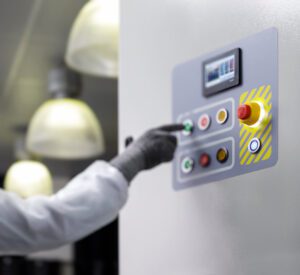
The “renovation wave” strategy proposed by the European Commission is an interesting read. For people like me who have been closely following energy efficiency and decarbonization policies in Europe for more than 15 years, it is a step change in how we approach policy-making on that topic.
Building is the critical sector to tackle if Europe wants to achieve its COP21 commitment. Around 25% of the current building stock could be considered “future-proof”, meaning that 75% of buildings still need to be renovated.
EU policy efforts on energy efficiency in buildings have increased step by step in the past 20 years. But much of the effort has been driven at national level. For instance, about €500 billion have been spent to renovate buildings in Germany from 2010 to 2018.
Overall, public initiatives have failed to address the issue. In average, the yearly deep energy efficiency renovation rate barely reaches 0,2% for both residential and non-residential buildings in the EU (bringing more than 30% energy savings).
Based on the current renovation rate, we estimate it would take approximately four centuries to renovate the building sector in Europe in order to be in line with the COP21 trajectory.
Hence the question: why the decarbonization of the building sector has been kind of sluggish compared to others? Although far from being perfect, we can see the energy transition happening faster in power generation, automotive and industry for instance. I believe there are three sorts of reasons for that.
Firstly, the policy framework around energy efficiency in building has mainly looked to improve things in silos – in particular, the performance of the building fabric on one hand and the one of building equipment (such as boiler and lightbulb) on the other hand.
These are low-hanging fruits in many ways. But the approach is ontologically wrong if we want to realize a step change in how our energy system works.
The issue at stake is to look at the problem from a demand-side perspective. How to start the energy system from an end-user perspective so to minimize the energy consumption from the beginning and anticipate the potential conflict in deploying renewable energy power and energy efficiency solutions at the same time.
Secondly, we are not looking enough the issue from a rationale point of view. Much of the policy effort has been directed toward residential buildings in Europe while the energy efficiency potential of non-residential buildings is at least twice more important (for the same level of investment)[1].
Also, the potential impact of digitization has been vastly underestimated. Digital technologies improve efficiency through the entire lifecycle (design, construction and operation) and at systemic efficiency level.

Lastly, Europe is not a matter of principle when it comes to energy efficiency of buildings. It is a question of economy of scale. We cannot deny that the building industry is highly localized. Yes, it does not make sense to have one size fit all approach regarding the building market in Europe.
But the most powerful way to ‘massify’ a renovation industry which is not existing for the time being, is to give access to a consumer market of about 500 million people. Because it will attract financial investors and accelerate the deployment of solutions by industries, SMEs and local artisans. To make a comparison, the electrical vehicle market will never fly in Europe, should we have 27 different markets.
Back to the publication of the ‘Renovation Wave’, it represents a step forward in the policy framework about energy efficiency in buildings in Europe as it starts to address the issues I highlighted.
Next year, the European Union will open the revision of a few regulations about energy efficiency and renewable energy (Energy Performance in Building Directive, Energy Efficiency Directive and the Renewable Directive). To fast forward the level of efforts to be dedicated to building decarbonization. It is worth to consider four ideas for policymakers.
- A set of macro-indicators for buildings focusing on digital and green. We need a clear set of regulatory AND market signals whether the right set of technologies and incentives are deployed across European countries to make buildings smart and green.
- A performance certification system based on real time monitoring (as much as possible) in order to display actual CO2 consumption of buildings.
- A set of decarbonization milestones at EU level starting by non-residential building so to achieve the objective of carbon neutrality in the building sector by 2050.
- A roadmap to accelerate the deployment of critical technologies to transform buildings in prosumers: such as IoT connection and digital controls, self-consumption, storage and heat electrification.
Buildings of the future must be at the heart of the green transition in Europe. That requires to think more from a demand-side management perspective. Such paradigm shift would be worthwhile because it could transform our buildings into prosumers and fundamentally change how people, how end-users consume and produce their energy.
[1] In terms of absolute savings, the average energy renovation within the EU is estimated to reduce a non-residential building’s specific primary energy consumption by 47 kWh/(m².y) compared to 14 kWh/(m².y) for residential buildings; source: https://ec.europa.eu/energy/sites/ener/files/documents/1.final_report.pdf



